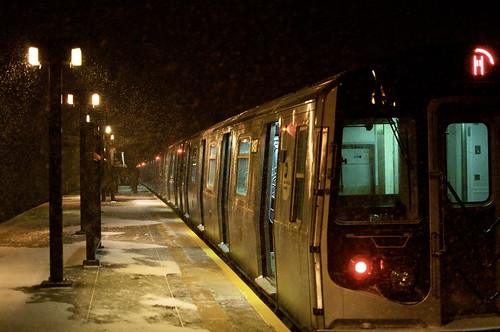加州大學戴維斯分校交通與發展政策機構(Institute for Transportation and Development Policy)最新的研究報告指出,若從現在起至2050年,搭乘大眾運輸、步行或騎腳踏車的人數增加,可省下公共支出和個人支出至少100兆美元,碳排量每年也可望減少17億公噸。
減碳省錢 大汽車主義或將束之高閣
「研究指出,若徹底擺脫以汽車為中心的發展過程,尤其是在經濟快速發展的國家中,可以大量減少都市中的二氧化碳並且降低成本。」富通(Lew Fulton)說道,他是加州大學戴維斯分校和交通與發展政策機構「下一步計畫」(NextSTEPS Program)的負責人之一,參與這份報告的撰寫。
富通補充:「還有相當重要的一點,就是減少所有交通工具所消耗的能源與排碳量。」
報告引述國際清潔運輸委員會(International Council on Clean Transportation)的分析,指出如果各國政府能在2050年前有效控制交通工具的汙染與超低硫燃料的使用,每年可避免大約140萬民眾因長期呼吸交通工具所排放的廢氣而早逝。
研究人員發現,若每單位燃料可供交通工具行駛的里程數加倍,在2050年時可以減少二氧化碳等溫室氣體的排放量約7億公頓。
改變交通投資 保障行人、自行車安全
《全球快速轉移方案》(A Global High Shift Scenario)這份報告,是第一份討論如果改變對交通運輸產業的投資,會對都市旅客的排碳量和不同收入族群的交通方式造成什麼影響。
報告同時也計算出,如果把用於道路建設、興建停車場、車庫和其他鼓勵車輛使用的投資,轉移到大眾運輸、步行和騎腳踏車,所造成的影響。
作者計算了從2015年到2050年間,二氧化碳排放基線(Business-as-usual)和快速轉移方案(High Shift Scenario)的排碳量和其產生的成本。快速轉移方案即是由政府增加對鐵路、乾淨巴士運輸系統和基礎建設的投資,來確保步行和騎腳踏車的安全。
在快速轉移方案之下,大眾運輸使用率預計在低收入人口中將增加3倍以上,而在中低收入人口中將增加兩倍以上。作者指出,他們的發現有助於制定氣候政策,關鍵在於降低成本和公平對待富有國家與貧窮國家。
開發中國家大量依賴汽車 交通碳排將增2倍
都市地區的交通碳排量幾乎佔了所有運輸系統的1/4,2010年排放約23億公頓的二氧化碳。部分快速發展的都市,尤其是在中國與印度等快速發展的開發中國家,如果繼續採用二氧化碳排放基線標準,排碳量將會在2050年之前增加至少2倍。
在報告中列出3個國家作為參考:
- 美國:都市旅客運輸的排碳量為世界第一。美國計畫因為逐漸趨緩交通成長率並大幅提昇燃油的效率,預計到2050年可將排碳量從每年原本的6億7000萬公頓減少到5億6000萬公頓。但研究指出,使用更永續的運輸方式,例如減少以汽車使用的次數與旅程、以通訊技術來取代交通,能更進一步將排碳量減少至2億8000萬公頓。
- 中國:因為民眾財富和都市地區迅速成長,以及民眾對汽車的依賴節節攀升,因此交通運輸所產生的排碳量每年將會從1億9000萬公頓暴增到將近11億公頓。還好這些排碳量可望藉由實行快速轉移方案,例如在城市中廣泛的使用乾淨巴士與地鐵系統,減少到約6億5000萬公頓。最新的資料顯,中國已經開始增加在大眾運輸方面的投資。
- 印度:因為財富與都市人口迅速成長,排碳量預計將會從現在的7000萬公頓急遽的增加到2050年的5億4000萬公頓。若採用快速轉移方案可望將排碳量減少到3億5000萬公頓,但要先解決印度大眾運輸嚴重不足的問題。
此報告由福特基金會(Ford Foundation)、氣候工作基金會(ClimateWorks Foundation)以及休利特基金會(Hewlett Foundation)所贊助,第一次在美國紐約舉行的「聯合國住房與可持續城市發展會議」(人居三)籌備會上發表,正好在「聯合國氣候變遷高峰會」之前。
瑞普羅戈(Michael Replogle),非營利組織交通與發展政策(Institute for Transportation and Development Policy,ITDP)的常務董事也參與了這份報告的撰寫,他說道:「汽車使用率的快速成長,帶動了交通運輸業的快速成長,但汽車也是世界上最大的二氧化碳來源。」
「有一個可減少污染但備受忽視的可行方法,就是讓人們選擇使用大眾運輸工具、步行或騎腳踏車等乾淨的交通方式。尤其是對較貧窮的人而言,這些選擇大大的增加了他們在都市中的交通方式,還可以減少空氣污染。」瑞普羅戈補充。
More than US$100 trillion in public and private spending could be saved between now and 2050 if the world expands public transportation, walking and cycling in cities, finds a new report by the University of California, Davis, and the Institute for Transportation and Development Policy.
Reductions in carbon dioxide emissions reaching 1,700 megatons per year in 2050 could be achieved if this shift occurs, the researchers project.
Roughly 1.4 million early deaths linked to exposure to vehicle tailpipe emissions could be avoided each year by 2050 if governments require the strongest vehicle pollution controls and ultra low-sulfur fuels, concludes a related analysis by the International Council on Clean Transportation included in the report.
Doubling vehicle fuel economy could reduce emissions of the greenhouse gas carbon dioxide (CO2) by an additional 700 megatons in 2050, the researchers found.
“The study shows that getting away from car-centric development, especially in rapidly developing economies, will cut urban CO2 dramatically and also reduce costs,” said report co-author Lew Fulton, co-director of NextSTEPS Program at the UC Davis Institute of Transportation Studies.
“It is also critical to reduce the energy use and carbon emissions of all vehicles,” Fulton said.
The report, “A Global High Shift Scenario,” is the first study to examine how major changes in transportation investments worldwide would affect urban passenger transport emissions as well as the mobility of different income groups.
The report was released September 17 at the United Nations Habitat III Preparatory Meeting in New York, ahead of the September 23 UN Secretary-General’s Climate Summit, where more than 120 nations, as well as many corporations, will commit to reducing greenhouse gas emissions, including new efforts toward sustainable transportation.
“Transportation, driven by rapid growth in car use, has been the fastest growing source of CO2 in the world,” said Michael Replogle, co-author of the study and managing director for policy at Institute for Transportation and Development Policy (ITDP), a global New York-based nonprofit.
“An affordable but largely overlooked way to cut that pollution is to give people clean options to use public transportation, walking and cycling. This expands mobility options, especially for the poor, and curbs air pollution from traffic,” said Replogle.
The authors calculated CO2 emissions and costs from 2015 to 2050 under a business-as-usual scenario and a “High Shift” scenario where governments increase investments in rail and clean bus transportation, and build infrastructure to ensure safe walking cy cycling.
They included in their calculations the effects of moving investments away from road construction, parking garages and other steps that encourage car ownership, freeing up resources for the needed investments in public transportation, walking and cycling.
Transportation in urban areas accounted for about 2,300 megatons of CO2 in 2010, almost one quarter of carbon emissions from the transportation sector.
Rapid urbanization, especially in fast-developing countries like China and India, will cause these emissions to double by 2050 in the business-as-usual scenario.
Among the countries examined in the study, three stand out:
United States: Currently the world leader in urban passenger transportation CO2 emissions, the U.S. is projected to lower these emissions from 670 megatons annually to 560 megatons by 2050 because of slowing travel growth combined with sharp improvements in fuel efficiencies. But a high shift to more sustainable transportation options, along with fewer and shorter car trips related to communication technologies substituting for transportation, could further drop those emissions to about 280 megatons, the study found.
China: CO2 emissions from transportation are expected to mushroom from 190 megatons annually to more than 1,100 megatons, due in large part to the explosive growth of China’s urban areas, the growing wealth of Chinese consumers, and their dependence on automobiles. But this increase can be slashed to 650 megatons under the High Shift scenario, in which cities develop extensive clean bus and metro systems. The latest data show China is already increasing investments in public transport.
India: CO2 emissions are projected to leap from about 70 megatons today to 540 megatons by 2050, also because of growing wealth and urban populations. But this increase can be moderated to only 350 megatons under the High Shift scenario by addressing crucial deficiencies in India’s public transport.
Under the High Shift scenario, mass transit access worldwide is projected to more than triple for the lowest income groups and more than double for the second lowest groups.
The authors say their findings may help support agreement on climate policy, where cleanup costs and equity between rich and poor countries are key issues.
The study was funded by the Ford Foundation, ClimateWorks Foundation and Hewlett Foundation.
※ 全文及圖片詳見:ENS
※ 本文為教育部科學人文跨科際人才培育計畫(簡稱SHS計畫)所屬南區區域推動中心,舉辦「環境新聞編譯工作坊」之成果展現,特別感謝《科學人》編輯群協助審校。



